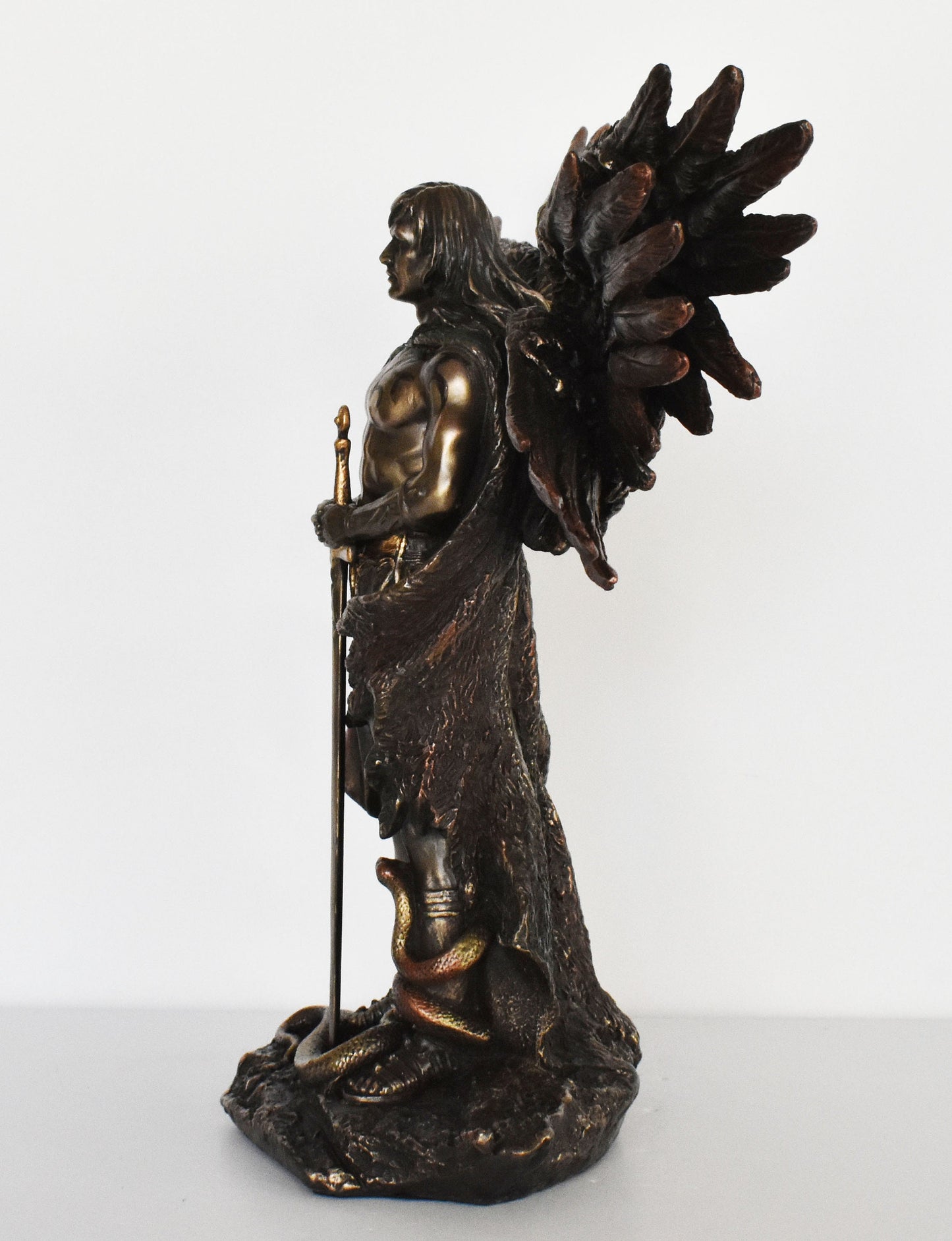Gallery Demeter
Cherub - Cherubim - First Sphere Angel - Protecting the Entrance of the Garden of Eden and the Throne of God - Cold Cast Bronze Resin
Cherub - Cherubim - First Sphere Angel - Protecting the Entrance of the Garden of Eden and the Throne of God - Cold Cast Bronze Resin
Regular price
€209,90 EUR
Regular price
Sale price
€209,90 EUR
Unit price
per
Tax included.
Shipping calculated at checkout.
Couldn't load pickup availability
Item Specifics
Condition: New
Material: Cold Cast Bronze Resin
Height: 26 cm - 10,2 inches
Width: 27 cm - 10,6 inches
Length: 10,5 cm - 4,1 inches
Weight: 1450 g
The first sphere angels serve as the heavenly servants of God the Son incarnated. The first Sphere of angels see and worship God directly, and they communicate his will to angels who are closer to the life of man. A cherub, plural cherubim is one of the unearthly beings who directly attend to God, according to Abrahamic religions. The numerous depictions of cherubim assign to them many different roles, such as protecting the entrance of the Garden of Eden and the throne of God.The cherubim are mentioned in Genesis, Exodus, 2 Chronicles, Ezekiel and 1 Kings.St. Thomas Aquinas imagined Satan as a fallen Cherub.In Jewish angelic hierarchy, cherubim have the ninth (second-lowest) rank in Maimonides' Mishneh Torah (12th century), and the third rank in Kabbalistic works such as Berit Menuchah (14th century). De Coelesti Hierarchia places them in the highest rank alongside Seraphim and Thrones.In the Book of Ezekiel and (at least some) Christian icons, the cherub is depicted as having two pairs of wings, and four faces: that of a lion (representative of all wild animals), an ox (domestic animals), a human (humanity), and an eagle (birds). Their legs were straight, the soles of their feet like the hooves of a bull, gleaming like polished brass. Later tradition ascribes to them a variety of physical appearances. Some early midrashic literature conceives of them as non-corporeal. In Western Christian tradition, cherubim have become associated with the putto (derived from classical Cupid/Eros), resulting in depictions of cherubim as small, plump, winged boys.In Islam, the cherubim are the angels closest to God and sometimes include the Bearers of the Throne and the archangels. Below the angels of the throne, the angels subordinative to Michael are also identified as cherubim. In Ismailism, there are seven cherubim, comparable to the Seven Archangels.Cherubim are also mentioned in the Second Treatise of the Great Seth, a 3rd century Gnostic writing









